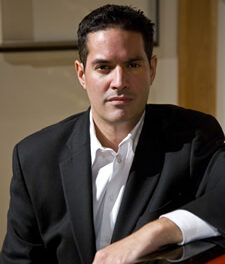We reel as (on 9/11…) we write and will doubtless still be reeling when this review appears in cyberspace, but as our national tragedies unfold, several things are clear. Music can be a healing force, and in the darkness of the present moment it can and will supplement other forms of therapy as we begin our long process of recovery. We cannot allow terrorist acts of violence to disrupt the fabric of our civilization, our culture, our art, for if our society is rent, long-term, the perpetrators of the hideous crimes that now command world-wide attention will win, and they cannot be permitted to do so. Life will never be the same, but life will go on.
A long-planned event involving two of our major cultural organizations took place on the afternoon of September 9 in Reynolds Theatre on Duke’s West Campus. The Mallarmé Chamber Players have a distinguished history of both outreach and outstanding performances. Likewise, the Indian Classical Music and Dance Society (http://www.geocities.com/icmds/ [inactive 6/05]) has long contributed to the richness of our musical lives. It’s a fact, though, that collaboration between these groups or between more or less conventional chamber music ensembles and traditional or ethnic music presenters have been relatively infrequent here, in the Triangle. The concept is hardly new: Yehudi Menuhin worked with Ravi Shankar long before “crossover” became a buzz-word, and Indian instruments have played increasingly larger roles in non-Indian music since the Beatles, at least.
The Mallarmé-ICMDS event, which was enhanced by fine program notes and some dramatic lighting, culminated three years of planning and involved sixteen outstanding artists – a remarkable dancer, an Indian singer, and fourteen instrumentalists. About half of these were MCP regulars – flutist Anna Ludwig Wilson, violinists Richard Luby and Tasi Matthews, violist Jonathan Bagg, cellist Jonathan Kramer, and harpist Emily Laurance. Guest percussionist/composer Wiley Arnold Sykes was also on hand. Coincidentally, some of these artists represent our leading Triangle universities–UNC, Duke and NCSU. The group assembled by the ICMDS included young and petite dancer Uma Tadepalli, vocalist Lakshmi Sarangapani, stellar sitarist Sudha Iyer, and a distinguished ensemble of players of traditional Indian instruments–Partha Aji, Supriya Desai, Vidyadhar Kulkarni, Sudhindra Rao, Kalyan Sundhar, and Kalyan Vaidyanathan.
Experience has led us to expect generous programs from our Indian friends, whose concerts can double as social events that often involve families and food. For mainline chamber music fans, this approach can take some getting used to; among other things, many of us frown on excessive audience activity. “From Ragas to Riches: The Music and Dance of India” was rich in diversity but the frequent stage changes consumed a good bit of time and the program itself was, well, generous. The afternoon began at 2:15 p.m. with a pre-concert lecture and demonstration that involved several of the artists. The results were mixed, but the introductions were surely beneficial to the substantial crowd that turned out for them. On the “traditional” side of the house, the program itself embraced several examples of Indian dance, in which Tadepalli was consistently impressive; a set of vocal solos with small ensemble; and a dazzling, lightly accompanied piece (Raga Kirwani) featuring the sitar.
Philip Glass’ String Quartet No. 2 supposedly showed Shankar’s influence on the American composer, but the notes indicated that it was in fact his First Quartet that bore the fingerprints of his then-recent discovery of Indian music. The Glass, which suggested the composer’s Fifth Quartet, played by the Ciompi Quartet during a Carolina Ballet collaboration several seasons ago, was astonishingly brief, for Glass, but could and perhaps should have been omitted, given the duration of the program. A composition by Shankar himself, written for flute (which often figures in traditional Indian fare), sitar and tabla, was performed by Wilson and harpist Laurance. The reading, which came early in the afternoon, was exceptionally fine, but in retrospect it might have made more sense to have given it in its original version. Composer Patnam Subsamanya Iyer was represented in the penultimate group, played on vina and violin with mridangam and ghatham accompaniment. Since the history of Indian music spans several thousand years, the names of many composers are unknown to us.
The grand finale was Sykes’ “Chiasmata,” described as “a fusion piece… with percussion solos.” It brought together most but not quite all of the afternoon’s musicians for what often resembled a jazz-like jamfest in which, as advertised, the ensemble’s percussionist–including Sykes himself on tabla–were featured. Unfortunately, the superstructure of this extended work was inadequately supported by its foundation, and it needed a whole lot more heat and pressure to achieve the “fusion” promised in the program. The piece got underway a little after 5:00 p.m. and dragged on, seemingly interminably, till nearly 5:30 p.m., which means that those who had taken in the pre-concert lecture invested some three and a quarter hours in a program in which some numbers were nonetheless cut or otherwise abbreviated. That’s excessive by any but Indian and operatic standards. The audience dwindled as the afternoon wore on and there was, alas, a good bit of grumbling. Collaborations are wonderful things, and both Mallarmé and the ICMDS are to be commended for this one, but next time, if there is a next time, we recommend the engagement of a strong editor, armed with a stopwatch and a very sharp knife [which, in retrospect, might not have been the most appropriate words to use, given what we were later to learn about the hijackers…].











